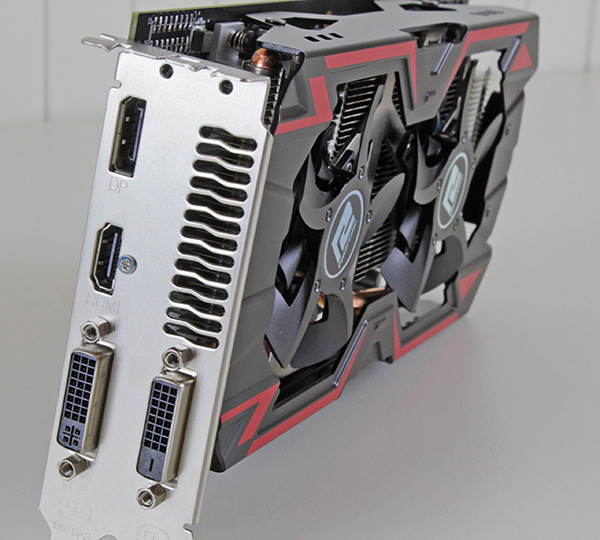Index
The TurboDuo R9 285 looks promising and once you pick it up it feels even better thanks to its metal shroud. That also makes the card rather heavy, but since it is a mid-range product it’s not too bulky or too heavy, but it does feel somewhat better than your average mid-range card. The TurboDuo R9 285 measures 207mm x 111mm x 38mm. For comparison the R9 270 PCX+ measures 240mm x 111mm x 38mm. So now we have more power in a smaller package, at almost the same TDP.
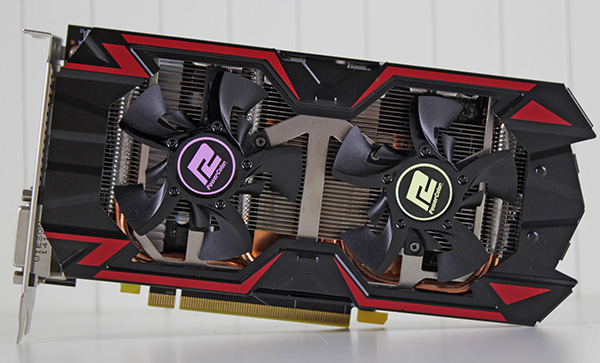
Image below shows R9 270 PCX+.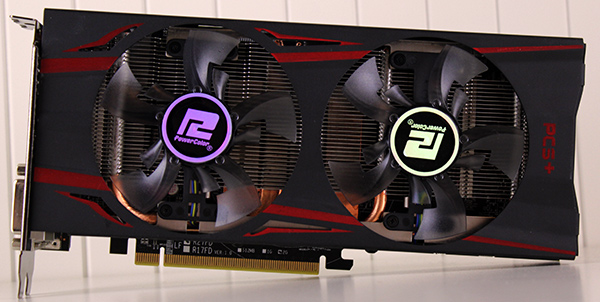
The top of the card is also quite attractive thanks to the differently shaped shroud.
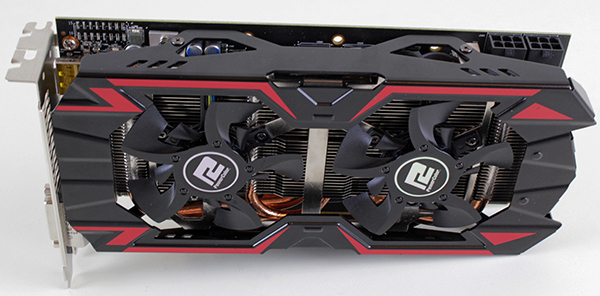
The R9 285 lacks Crossfire connector. AMD’s XDMA interface for bridgless Crossfire is implemented which improves Crossfire performance. The PCI-E 3.0 slots have plenty of bandwidth to ensure all inter-GPU communication between two or more R9 285 cards. It also results in a ‘cleaner’ design with fewer points of failure.
The following images illustrate the difference, this is what the 270 PCX+ looks like. It has a Crossfire connector since it is based on the older design (previously the R7870 GHz / Pitcairn).
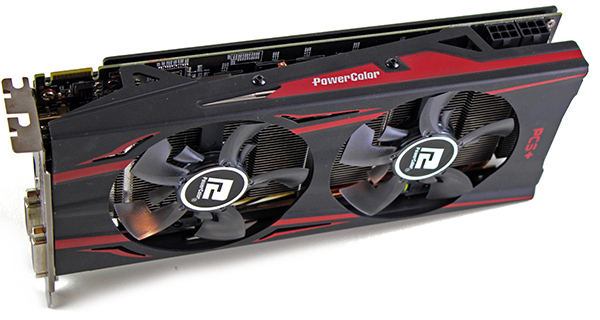
The shroud is opened on all sides and the openings serve as exhaust vents.
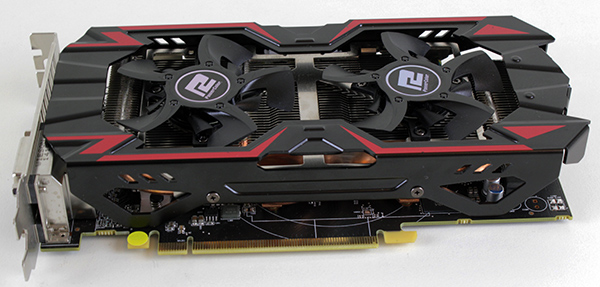

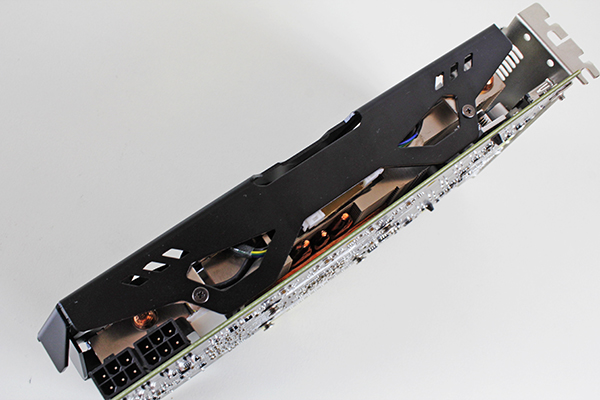
The R9 285 needs two 6-pin power cables for normal operation. According to AMD the R9 285 will draw a maximum of 190 Watts.
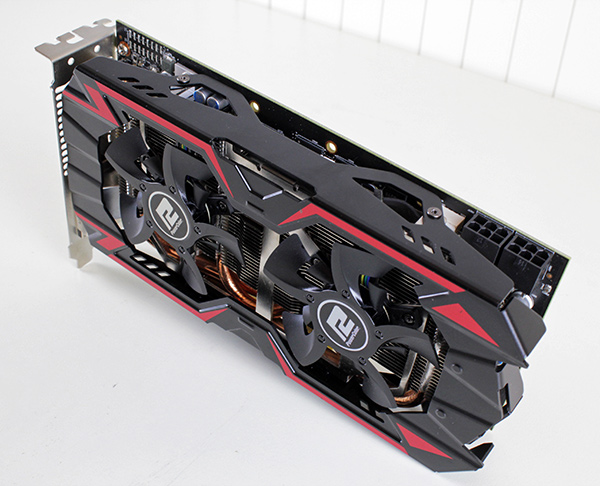
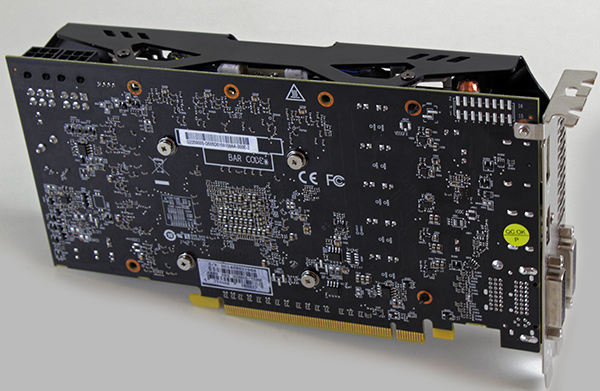
On the I/O panel you will find one standard DisplayPort, one standard HDMI and two dual-link DVI connectors. Next generation 4K (4096x2160) and UHD (3840x2160) resolutions are supported, making the card future proof to some extent. The biggest problem for 4K/UHD adoption is the relatively high price of even the cheapest monitors and the fact that entry level models can’t do 60Hz.
You can also use any combination of three of the four display connectors to run a three-monitor setup using the same or different panels. An HDMI 1.4a compatible sound device is built in the GPU, which also includes HD audio and Blu-ray 3D movies support so there is no need to connect the card to your motherboard’s/soundcard’s SPDIF out to get audio and video via HDMI.
